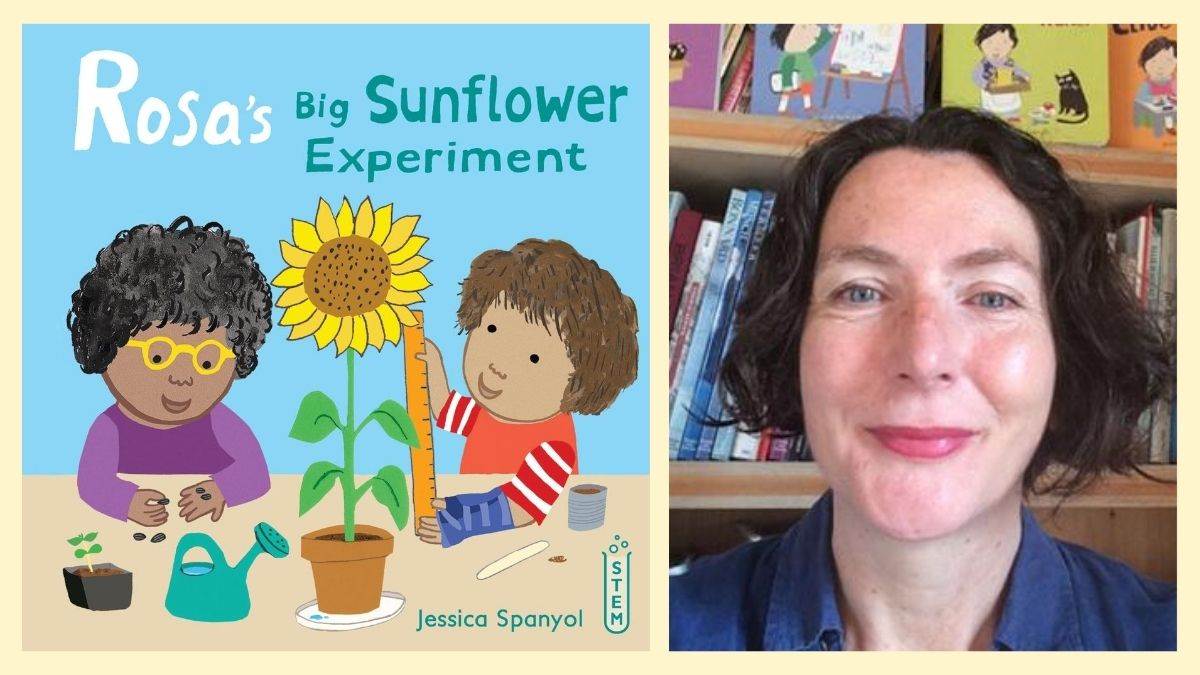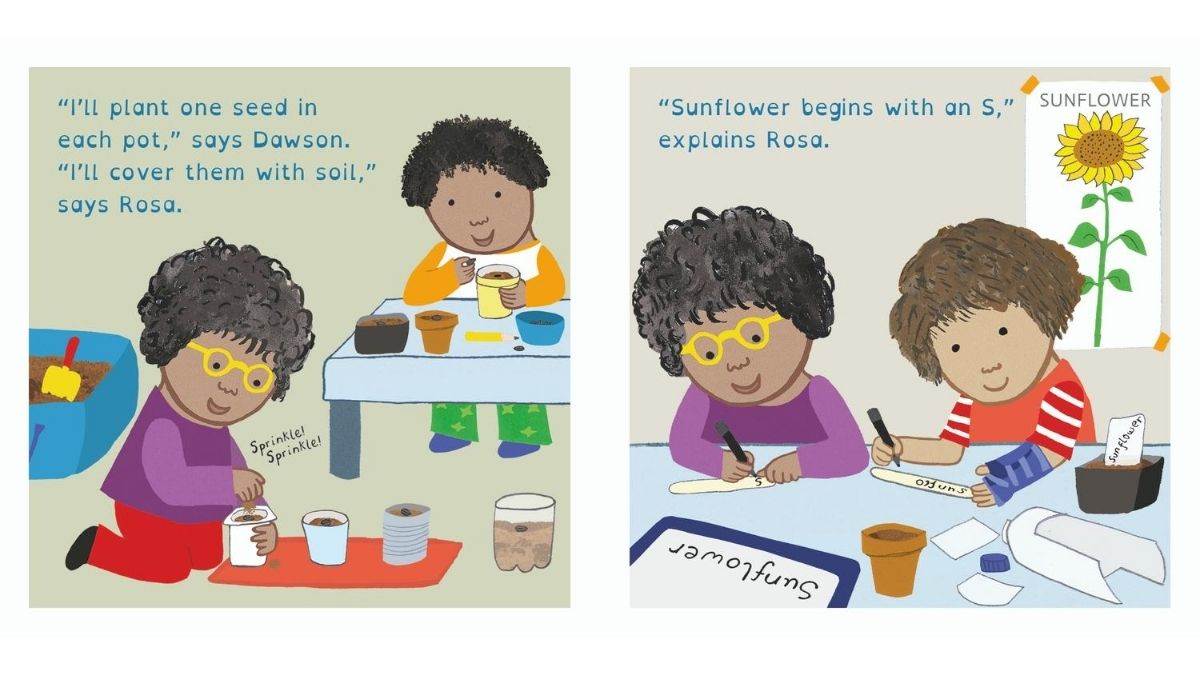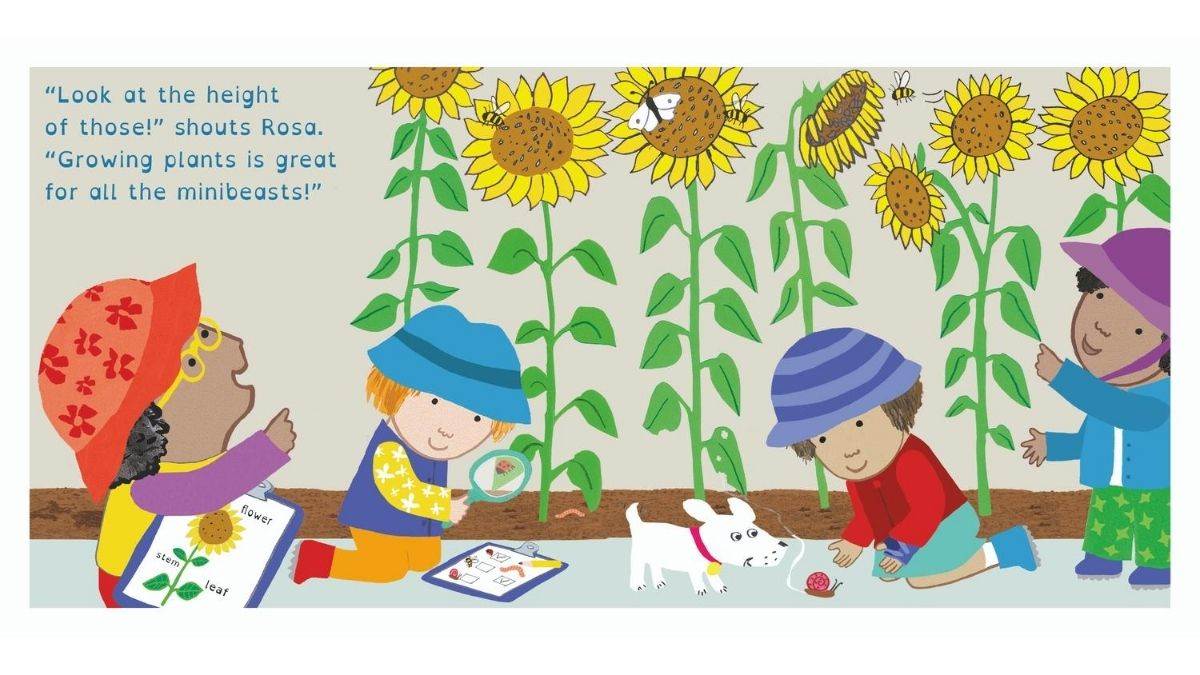How the Rosa and Clive books celebrate inclusivity
Published on: 03 August 2020
Alex Strick speaks to author Jessica Spanyol about the Rosa and Clive books and the importance of incidental inclusivity and diversity in children's literature.
 Author Jessica Spanyol and the cover of her book, Rosa's Big Sunflower Experiment
Author Jessica Spanyol and the cover of her book, Rosa's Big Sunflower Experiment
Your books are always beautifully inclusive, where all aspects of diversity are concerned, including of course disability. Is this something that has always been important to you, and if so, why?
When I first started making the “Clive” books I had my youngest son in mind. He is now a 15-year-old, creative and dyslexic and not someone who easily fits into a school system. As a parent I have always been worried that his self-esteem would be damaged because he wasn’t fitting in with some aspects of school. I made the first book series All about Clive to celebrate all the interests my son and many other boys have, free from the constraints of gender marketing.
Where disability is concerned, you go way beyond the most obvious representations and also suggest conditions other than physical disability - can you give us some examples?
I think it is really important to show and celebrate all children in picture books and I am really interested in the challenges of how neurodiversity can be illustrated. In the Rosa board books, there is a character Marcel who is on the Autistic spectrum, he loves to line up cars and play in parallel with his friend Rosa.
Child’s Play are widely recognised as being champions of incidental and authentic inclusion, so they must be the perfect publishing partner for you?
Yes! Most definitely! Making books is always a team process! I approached them about 5 years ago with a tiny seed of an idea of my character Clive. Working together with them in a collaborative process and their clear direction and visionary editing has really helped shape the “Rosa” and “Clive” books.
Do the ideas for new ways to include underrepresented children come from them, or you, or both?
I first approached Child’s Play with my idea to try and tackle gender stereotyping in a book, but it is the clear publishing program of Child’s Play and their vision to put every child in the heart of the book that has helped shape the “Rosa” and “Clive” books. Together we have developed the world of friends and characters that make up the friendship group and the world of Rosa and Clive.
 Illustration by Jessica Spanyol
Illustration by Jessica Spanyol
Your books include such a vast range of children - are you always on the lookout for more ways to ensure all children are included?
Yes it is always great fun to be thinking of new characters and recently I have been involved in a project with Pop Up Projects running author/illustrator workshops in some Kent special education schools. I have been privileged to meet some great children and it really showed me how important it is for everyone to see themselves in a book. I live with my family in inner city London and hope my books reflect the wonderfully diverse community that we live in.
Do you sometimes need to research different forms of disability to ensure the representation is authentic and accurate?
Even if a character is a background character in a small board book it is important to try and make that character as authentic as possible. I have found it really insightful listening to a great set of speakers at the Inclusive Minds “A Place at the Table” events. Different speakers say over and over, do your research! Keep characters authentic. Along with Sue Baker (Child’s Play), Beth Cox (Without Exception) has been absolutely invaluable with her editing advice for all the “Clive” and “Rosa” books.
Your characters come across with such real and individual personalities - how do you achieve this?
That is very nice of you to say so! I really hope that is the case. I don’t think I am very good at making things up so really all the characters are just reflections of aspects of my own children, (I am a mum of three) or their friends and the children I meet when I visit schools. I love thinking of names for all the characters, but most often I just borrow them from my children’s school friends.
What do you hope your books achieve above all?
Wow that is a big question! Most of the time I am working alone in my studio and I don’t really start with that thought!
One highlight has been that during my workshop in a Kent special education school, a boy called Reilly started to mimic the gentle play and tenderly look after the toys after reading Clive is a Nurse. The teacher said it as such a success as prior to that he had been struggling with purposeful play.
Another more recently has been a class in Shropshire during lockdown; their teacher read them Rosa’s Big Bridge Experiment And Rosa’s Big Pizza Experiment online. It was wonderful to be sent pictures of all their great bridges and pizzas that had been inspired by the books!
Above all I suppose I hope that the “Rosa” and “Clive” books encourage children to play, learn through play, have fun and be whoever they want to be! Illustration by Jessica Spanyol
Illustration by Jessica Spanyol
Topics: Features





